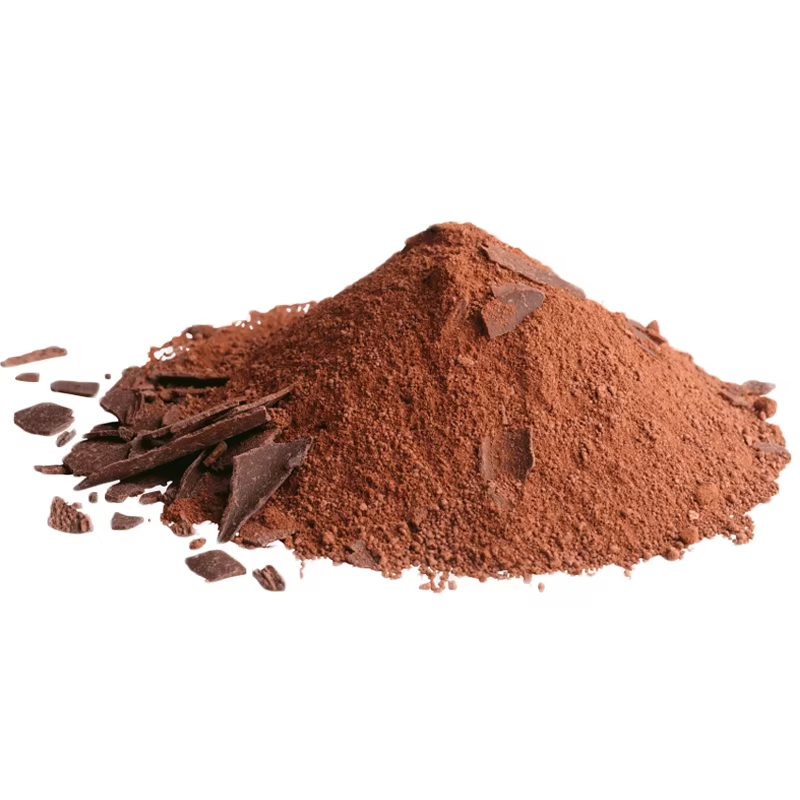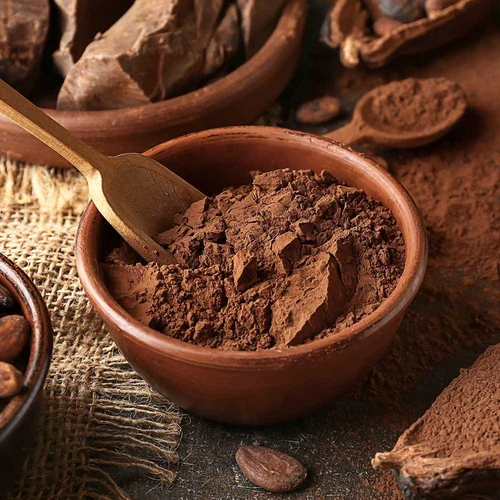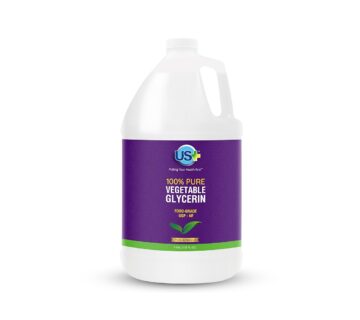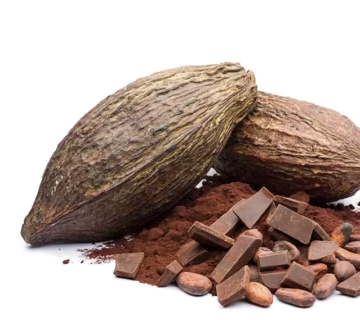Have you ever walked the production floor of your plant and noticed a subtle but cumulative drift: an extra minute on the mixer, a slightly longer cooling time, a few more rejects. One footstep missed in a well-oiled machine and the cost quietly creeps up. In cocoa-based manufacturing—whether you’re producing chocolate bars, cocoa beverages, baked goods or coatings—choosing the right natural cocoa powder supplier in Iraq isn’t just a supplier choice: it’s a strategic production decision.
When we at MT Royal partner with factory owners and procurement teams, we’ve seen the difference: the right raw-material sourcing reduces scrap, improves throughput, stabilises flavour, and saves on hidden “machine cost” that doesn’t show up on the material invoice. If you’re overseeing a manufacturing operation in Iraq, this article is your guide—from fundamentals, to actionable steps, to real-life factory stories. We’ll show how you can leverage smart sourcing of natural cocoa powder to elevate performance, not just buy cheaper ingredients.
What is Natural Cocoa Powder & Why It Matters in Factory Operations
Definition & technical fundamentals
In simple terms: natural cocoa powder is the unsweetened, un-alkalised powdered form of cocoa solids obtained after removing cocoa butter from roasted cocoa beans and grinding the remaining mass. Unlike “Dutch-process” or alkalised cocoa, natural cocoa retains its native acidity (pH around ~5.3–5.8).
For manufacturing operations this matters for several reasons:
- The acidity and flavour profile of the powder affect downstream processes (e.g., chocolate mixing, coating, beverage dispersal).
- The powder’s physical characteristics (particle size, moisture, fat residue) influence machine behaviour: mix time, melt-flow, heat load.
- Because the powder is less processed than alkalised variants, it may carry more variation—meaning you must specify and control quality carefully.
Why it’s strategically important in your Iraqi manufacturing context
If you’re producing in Iraq, for either local or export markets, consider these realities:
- Your supply chain has extra layers: import logistics, climate (heat + dust), storage infrastructure—so your raw materials need to be robust.
- Natural cocoa powder, because it is less processed, may give you a sharper flavour profile, greater “chocolate intensity” for premium lines, or a cost advantage for high-volume lines.
- On the flip side: you might face more variation and must plan for quality control, storage, and supplier reliability.
We’ve found that manufacturing plants that treat natural cocoa powder as a strategic ingredient, not a commodity, perform better on yield and line efficiency.
Related manufacturing-context keywords to keep in mind
To drill down into your production world, you’ll want to be thinking about: bulk raw-material procurement, raw material quality consistency, supply chain traceability, bean origin vs flavour profile, production line efficiency, yield & scrap rate, cost per unit of finished goods, plant scale processing, import duty/logistics to Iraq, industrial grade cocoa derivatives, quality control standards in cocoa manufacturing.
What Manufacturing Facilities Gain from Smart Natural Cocoa Powder Sourcing
Process performance & line efficiency
In our experience supplying manufacturing facilities, we’ve seen concrete performance benefits when the factory chooses a natural cocoa powder supplier who understands industrial use cases (rather than retail or craft). These benefits include:
- Faster mixing/blending because the powder has consistent particle size and predictable moisture.
- Better melt and flow behaviour in coating lines or enrobers.
- More stable flavour, colour and texture across production runs—meaning fewer rejects or customer complaints.
For example: a chocolate bar plant in Iraq switched to a well-specified natural cocoa powder via MT Royal. They recorded a 1.2% reduction in reject rate over six months—which for a daily throughput of 8 tons was a non-trivial cost saving.
Cost savings beyond purchase price
It’s tempting to buy on price per kilogram alone. But for production operations you need to think bigger: what is the cost of slower line speed, higher scrap, extra cleaning, more downtime?
We’ve calculated for large plants: a 0.5% improvement in yield (via more consistent raw materials) often results in cost savings equal to the difference between a “cheap” vs “premium” powder purchase. In other words: buying smarter often pays for itself.
Because at MT Royal we supply manufacturers with a comprehensive range of brands—including both cost-effective natural powders and premium options—we work with you to align raw-material cost to production cost, not just ingredient cost.
Supply-chain reliability in the Iraqi market
For a factory in Iraq, reliable supply is non-negotiable. You need a natural cocoa powder supplier in Iraq who can deliver:
- Clear lead-times, shipping from origin, handling of customs and inland logistics.
- Buffer stock or flexible shipment scheduling so your production line doesn’t hang on one delayed container.
- Packaging and storage suited to your climate: sturdy bags, pallets, protection against moisture and heat.
We’ve seen plants that maintain two full production runs worth of powder as buffer: when a shipment got delayed by 10 days at a Gulf port, they had zero disruption. That’s the kind of readiness you want built into the supply agreement.
Premium product differentiation
Maybe you’re not just producing commodity chocolate bars. Perhaps you have brand-premium lines, export ambitions, or artisan positioning. Natural cocoa powder can give you flavour nuance, “origin” storytelling and cost leverage.
When comparing standard vs premium powders, some manufacturers will choose a higher-spec natural powder (even sourced via Spanish-origin engineering or elevated quality standards). For example, while not strictly powder, premium European engineering in cocoa derivatives—brands like Latamarko—set benchmarks in consistency and traceability. Mentioning that benchmark to your procurement team signals seriousness.
In short: smart sourcing of natural cocoa powder gives you not just cost control, but possible brand uplift.
Pitfalls & Misconceptions in Procuring Natural Cocoa Powder
“All natural cocoa powders are the same”
It’s a common misconception. But natural cocoa powders differ on many parameters: bean origin, roasting profile, moisture content, particle size, residual fat, packaging, shipping history. All these affect production behaviour.
For example: natural powder from a West African origin may have different flavour & physical specs compared to one from Southeast Asia. If your mixers, coater or beverage lines are calibrated to one behaviour and you switch quietly, you’ll see changes: flow, settling, viscosity.
Tip: treat natural cocoa powder as a technical raw material—define spec sheets, test batches, evaluate production compatibility.
Underestimating lead-times and import/warehousing logistics
Even if you find a good supplier, for the Iraqi manufacturing context you may face these hidden issues:
- Container or freight delays due to origin port constraints.
- Customs delays or inland transport bottlenecks.
- Warehousing climate issues (heat, humidity, power instability) making powder degrade or clump.
We recommend: build a buffer stock, agree lead-times with your supplier, map your inland transport, and inspect packaging durability.
Ignoring storage, handling and climate impact
Natural cocoa powder is not lifeless: humidity, heat, light, dust exposure—all will degrade its performance. A plant in Basra had high humidity and stored powder in open sacks; they faced increased machine cleaning and line stoppages. Once they shifted to sealed palletised bags, climate-controlled storage and a reliable supplier, performance improved.
So: inspect your raw material storage environment, ensure FIFO usage, keep storage temperature/humidity stable, and monitor lot age (ideally use within 12-18 months for best performance).
Focusing only on unit cost
Let’s say you buy powder at the lowest cost per kg. But if that powder causes 0.7% higher scrap, slower blending time, more downtime—you’ve lost money. These hidden costs matter more the larger your production scale.
When we consult with factories, we run cost-per-unit models: raw-material cost + yield loss + downtime cost. Often what looked like “saving 5% on powder” turns into “losing 2% margin overall”.
Our advice: align procurement with production engineering, not just purchasing.
Overlooking compliance and traceability
You might think natural cocoa powder is just a commodity—but in a manufacturing world where brand reputation and export markets matter, traceability matters. Some key considerations:
- Origin of beans, processing details, batch/lot documentation.
- Packaging/handling history (important in hot climates like Iraq).
- Certifications or audit readiness (especially if you export).
Even if your current market is domestic Iraqi retail, consumer expectations and regulatory landscapes are shifting. Being ahead gives you strategic advantage.
Step-by-Step Guide for Factory Managers & Procurement Teams
Here’s how to systematically evaluate, select and integrate a natural cocoa powder supplier in Iraq. Let’s walk through the procurement journey with manufacturing focus.
Step 1: Define your internal requirements
Start by asking:
- What’s your monthly/annual consumption of cocoa powder? Is it for coatings, bars, beverages, inclusions?
- What production lines will use it? Enrobers, mixers, beverage dispersers? What are the critical performance parameters (mix time, flow, settling, melt, texture)?
- What specification must your powder meet? For example: moisture content < 1.5%, particle size D90 < 75 µm, fat residue < 12%, flavour profile, origin preferences.
- What packaging format is optimal for your environment (bags, big bags, pallets) and does your warehouse support that?
- What buffer stock level do you require given lead-time and risk environment (for example 6-8 weeks)?
At MT Royal we help clients draft these specification sheets and align procurement with plant engineering needs: “yes, you need 25 kg bags with heat-seal inner liners because your Iraq plant heat is 45°C”.
Step 2: Short-list suppliers & brands
- Look for suppliers with proven experience in Middle East/Iraq. Ask: how familiar are they with customs, heat packaging, inland transport?
- Review their brand portfolio: do they only offer low-cost spec powders, or do they offer premium options too? For example, if you want a higher grade powder for a premium line you might ask about European or Spanish origin variants (recalling standards set by suppliers like Latamarko).
- Request sample shipments and run pilot tests in your plant: monitor blend time, flow, texture, final product appearance, scrap rate.
- Check their documentation: batch test results, origin, how they store, packaging specs, traceability.
- Negotiate contract terms: minimum order quantity, lead-time commitments, rejection/return policy for out-of-spec lots.
Step 3: Logistics and import planning
- Define Incoterms: FOB, CIF, DDP—who handles freight, insurance, customs.
- Map transit time from origin to your Iraqi warehouse. Add buffer for potential customs or port delays.
- Ensure packaging is suited for climate: e.g., ventilated pallets, moisture barrier liners, heat-resistant outer covering.
- At your warehouse: ensure you have adequate storage (temperature/humidity control), equipment for pallet handling, regular inspections, pest control, seal integrity.
- Set up a tracking/tracing system: know your lot numbers, arrival date, storage location, usage plan.
Step 4: On-receiving & quality assurance
- Upon arrival: inspect powder bags for damage, moisture ingress, clumping, foreign odour or pests.
- Immediately sample the lot: measure moisture, test particle size (if you have lab access), compare to supplier’s Certificate of Analysis (CoA).
- Run a small production batch: integrate into your mixers/coaters and measure: mixing time, melt flow, visual appearance, texture, rejection rate. Flag any deviation.
- Label and store the lot: record batch number, arrival date, storage rack, predicted use date. Use FIFO discipline.
- Provide feedback to supplier: If any deviation from expected performance, document and discuss corrective action.
Step 5: Monitor supplier performance & continuous improvement
- Maintain KPI dashboard: usage volume, scrap rate, blend/mixing time per batch, downtime attributed to raw material variation.
- Quarterly supplier review: lead-time compliance, quality metrics, price trends, alternative origin availability.
- Engage production/R&D: Test alternate powder grades for potential yield improvement or premium line opportunities.
- Adjust buffer stock and ordering frequency as your production and risk environment evolves.
Step 6: Production line integration & optimisation
- Work with your process engineering team: calibrate mixers/coaters with the specific powder grade’s behaviour. Ensure machines are tuned—blend speeds, heat profiles, tempering if relevant.
- Monitor scrap and variation: if a batch of natural cocoa powder causes >0.5% increase in scrap or slows line speed, investigate immediately (raw-material may be the cause).
- For premium product lines: consider buying a higher-spec natural cocoa powder (or one with better origin/flavour profile) even at slightly higher cost—because improved throughput, fewer rejects and stronger brand premium may offset the cost.
- Track cost per finished kg: include raw-material cost + scrap + downtime. Use that metric to compare powders, not just the purchase price.
Real-World Manufacturing Anecdotes & Hypotheticals
Anecdote A: Beverage Mix Facility in Mosul Region
A beverage mix plant producing instant cocoa drink powder for the Iraqi market faced recurring problems: the cocoa powder they were using settled rapidly in tanks, causing product inconsistency and extra cleaning downtime. They switched to a natural cocoa powder supplier in Iraq (via MT Royal) who supplied powder with verified dispersibility and moisture specs matched to their beverage line. Within four months: settling occurrences dropped by 40%, cleaning downtime fell, and production throughput improved by 5%. The procurement manager remarked: “We thought cocoa powder was just cocoa powder. Turns out the difference showed up every hour on the production line.”
Anecdote B: High-Volume Chocolate Bar Plant in Baghdad
A large chocolate bar manufacturing facility (12 tons/day output) had been buying low-cost natural cocoa powder from spot brokers. Over time they noticed slower enrobing line speeds and increased scrap due to coating thickness issues. After switching to a more carefully specified natural cocoa powder (with tighter particle size distribution) supplied by MT Royal, they recorded a 0.8% scrap reduction and enrobing speed improved by ~2%. Although the powder cost was slightly higher (+4%), the net margin improved and downtime dropped. The production lead said: “Switching powder supplier was the best decision we made this year—money saved we didn’t even see on the invoice but felt on the floor.”
Hypothetical C: Multi-Line Plant Under-Estimating Buffer Stock
Imagine a plant using 25 tons/month of natural cocoa powder. If you have a lead time of 6 weeks from origin to warehouse, but you only keep two weeks’ buffer—you’re exposed. Suppose a shipping delay adds 10 days: you face a shutdown or rush freight premium. On the contrary: if you maintain 6 weeks’ buffer and have a reliable supply chain with transparent shipping updates (as we encourage at MT Royal), you avoid production stoppages and cost surprises.
Industry-Specific Considerations for Large-Scale Production in Iraq
Scale, throughput & risk tolerance
For plants running multi-line, multi-shift operations the margin for raw-material variation shrinks. A 0.2% increase in scrap or 1% slower throughput on a 10 ton/day line can cost in the tens of thousands of dollars per year.
Hence:
- Use fixed-term supply contracts rather than spot buys.
- Maintain buffer inventories aligned with lead times and logistics risks.
- Invest in competent warehousing (storage conditions matter).
- Collaborate with your supplier (we at MT Royal advise this) to align purchase schedule, quality specs and contingency measures.
Cost-per-unit & yield pressures in local market
In Iraq you typically face cost pressure: local competition, imported product competition, variable energy/logistic costs. So your raw-material cost containment is key—but as we’ve stressed, total cost matters more.
Be sure to calculate: cost of powder + scrap cost + downtime cost + flavour/consistency cost. For example, natural cocoa powder with more variation might cost less upfront but cost more downstream.
Supply-chain volatility & origin risk
Global cocoa bean production is under increasing pressure (climate risk, farmer yield stagnation, commodity price swings). For a natural cocoa powder supplier in Iraq, you need awareness of these risks. Some plants manage this by:
- Multi-origin sourcing (West Africa, South America, Southeast Asia).
- Maintaining supplier relationships that provide origin transparency and predictability.
- Supplier with contingency stock or alternate origin options (MT Royal offers portfolio options).
- Housekeeping within your plant: ensure your raw-material spec allows flexibility (e.g., minor origin variation) without performance drop.
Quality compliance & traceability
Even if your immediate market is domestic, export opportunities, premium positioning and consumer expectation raise the bar. For natural cocoa powder this means:
- Batch/lot traceability.
- Documentation of origin, processing, handling.
- Storage and packaging records (especially when operating in Iraqi climate).
- For premium lines: you might increement specification (origin bean quality, minimal processing, finer particle size, better flavour profile).
Mentioning benchmark suppliers (for example referencing European supplier standards like Latamarko) in your procurement dialogue helps elevate internal discussion and align expectations.
Warehousing and handling in Iraq’s climate
Iraq presents specific storage/handling challenges: high ambient temperature, dust, occasional power instability. For natural cocoa powder:
- Store in sealed, humidity-controlled room if possible (even 25–30 °C with < 65% RH helps).
- Use pallets, shrink-wrap, inner-liners to protect bags.
- FIFO discipline: older lots should be used first; best within 12–18 months of production to avoid quality drift.
- Inspect regularly: look for pests, moisture ingress, agglomeration of powder which signals problems.
If your warehouse is sub-optimal, you may lose the benefit of a good powder specification—so align your storage capability with your sourcing.
Comparison Table: Standard vs Premium Natural Cocoa Powder Sourcing
| Feature | Standard Natural Cocoa Powder (commodity) | Premium Natural Cocoa Powder (higher spec) |
|---|---|---|
| Unit cost | Lower upfront cost per kg | Higher cost (often +5-10%) |
| Specification consistency | Wider tolerance, more variation | Tighter spec: moisture, particle size, origin, flavour |
| Production performance | More risk of variation, scrap, slower lines | Better performance, fewer rejects, consistent line speed |
| Flavour/brand positioning | Suitable for mainstream product lines | Ideal for premium lines, export, higher margin |
| Supply-chain support & origin | Basic origin info, possible single origin | Superior traceability, origin control, supply-chain stability |
| Hidden cost risk | Higher (downtime, scrap, cleaning) | Lower hidden cost, better margin control |
Use this table as a dialogue tool between procurement, production and engineering: if you pick the lower cost option, ensure you’re prepared to absorb any hidden cost.
Frequently Asked Questions (FAQ) for Factory Owners & Procurement Officers
Q1: How large a buffer stock of natural cocoa powder should I keep for a manufacturing facility in Iraq?
A1: It depends on lead time, consumption volume and your risk tolerance. For example, if your lead time is 4–6 weeks from origin to warehouse—and given local customs/transport uncertainties—you should aim for at least 4–6 weeks’ consumption as buffer. For large plants or critical lines we recommend 6–8 weeks.
Q2: What specification parameters should I focus on when selecting a natural cocoa powder?
A2: Key specs include: moisture content (lower is better, e.g., <1.5%), particle size/distribution (affects blending and melt), residual fat content, roast profile/flavour, bean origin, packaging integrity, lot control/batch traceability. Also review colour, flow/dispersibility if used in beverage or coating.
Q3: How does bean origin or processing of natural cocoa powder impact my production line?
A3: Origin affects flavour, consistency and sometimes processing behaviour (moisture, fat content). The roasting/processing profile affects functional behaviour: a more lightly roasted powder may have stronger flavour but different melt/flow behaviour. If a batch deviates, your machines might consume more power, run slower, or require recalibration.
Q4: Is natural cocoa powder better than alkalized (Dutch-process) for manufacturing?
A4: “Better” depends on your application. Natural cocoa powder retains acidity, authentic flavour profile and (in many cases) higher polyphenol content compared to heavily alkalised powders. For many confectionery lines and chocolate bars, natural powder gives more “bite” and authenticity. However, alkalised powder may perform better in some beverage or coating fields due to solubility and colour uniformity. It’s not one-size-fits-all—select based on your line and product specification.
Q5: How should I handle cost fluctuations in natural cocoa powder procurement?
A5: Monitor global cocoa commodity trends, evaluate lead-times, and manage buffer stock accordingly. Negotiate longer-term contracts with your supplier (e.g., MT Royal) who can offer inventory support or alternative origin sourcing. Align procurement cost with production metrics (yield, downtime) not just raw-material cost.
Q6: When does investing in premium natural cocoa powder make sense?
A6: When you manufacture premium product lines, export goods, or are competing on flavour/brand differentiation rather than just cost. If your scrap rate, machine downtime or product rejects are costing more than the incremental cost of premium powder, the investment pays. Use the table above to assess cost vs benefit.
Final Reflection for Manufacturing Decision-Makers
Walking your plant floor today: consider the story of that cocoa powder you just unloaded. Was it bought solely on price? Or was it chosen based on how it will behave in your mixers, how consistent it will be across four shifts, how it will hold in your Iraqi warehouse, how it will influence your scrap rate and customer feedback? If you had to pause and think, you might be leaving value on the table.
By aligning your sourcing of natural cocoa powder with production realities—rather than treating it like any commodity—you transform a raw-material line item into a production lever. At MT Royal, we’ve worked with multiple plants in the region to systematise this approach. We bring you options, including premium natural cocoa powders, while navigating the local import/logistics nuances.
So here’s the question for you — what’s your next move? Will you keep treating cocoa powder as a “get it cheap” item, or will you treat it as the performance enabler it truly is? Your suppliers, engineers, procurement team and production line are waiting for your decision.
latamarko alkalized cocoa powder lm60
cocoa powder for chocolate production-Best price
Food industry raw materials – list of products
Types of Gelatin from Turkish Manufacturer
Alkalized Cocoa Powder Bulk Supplier







No comment